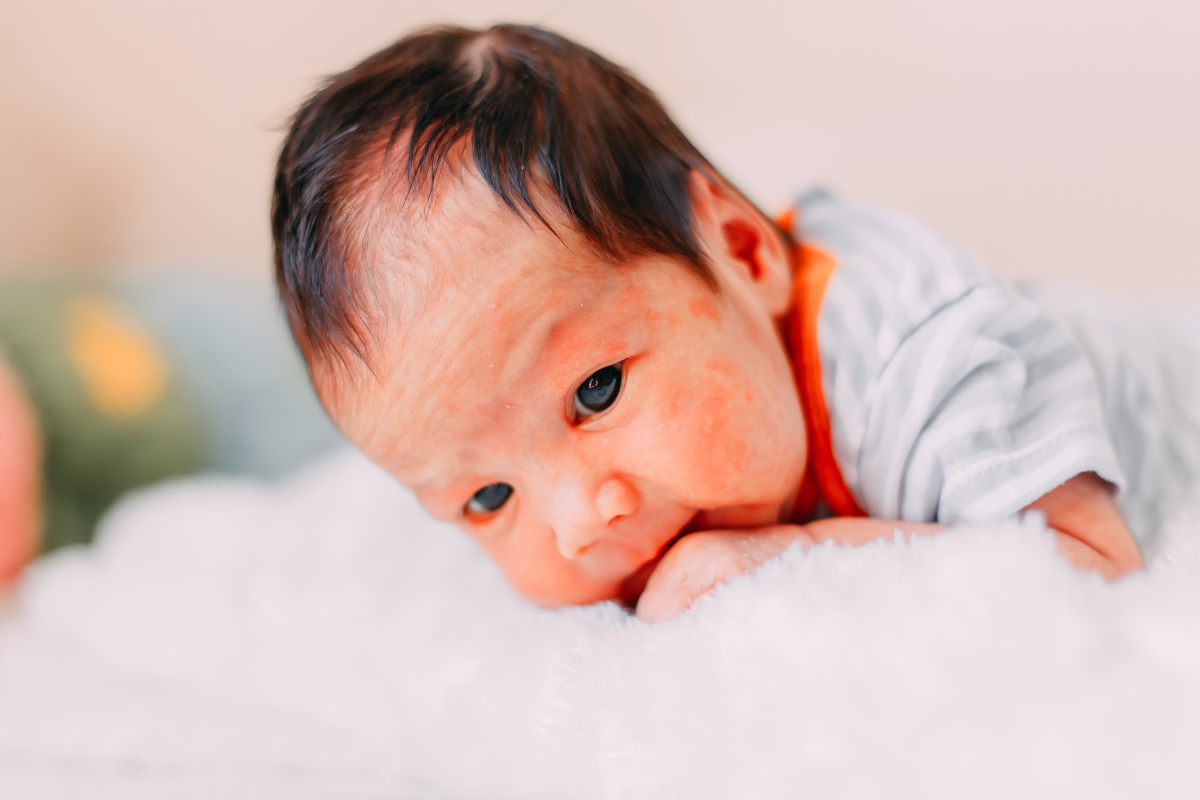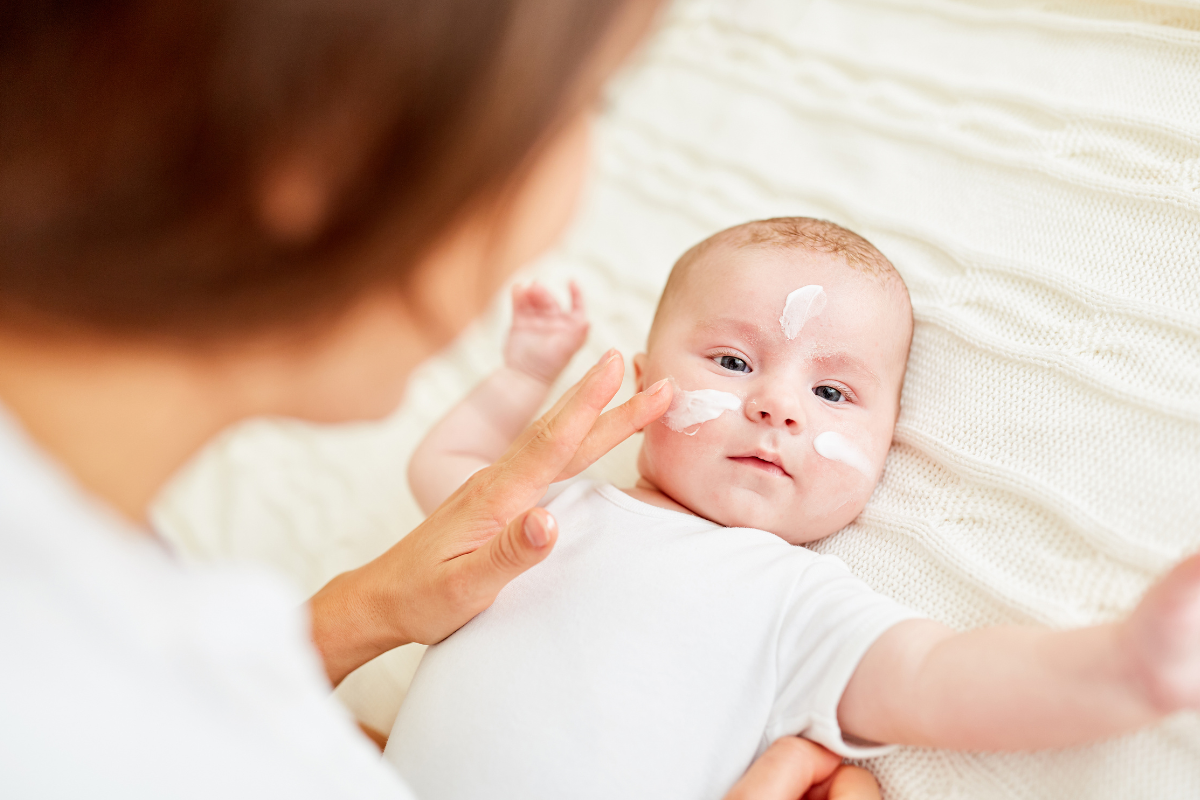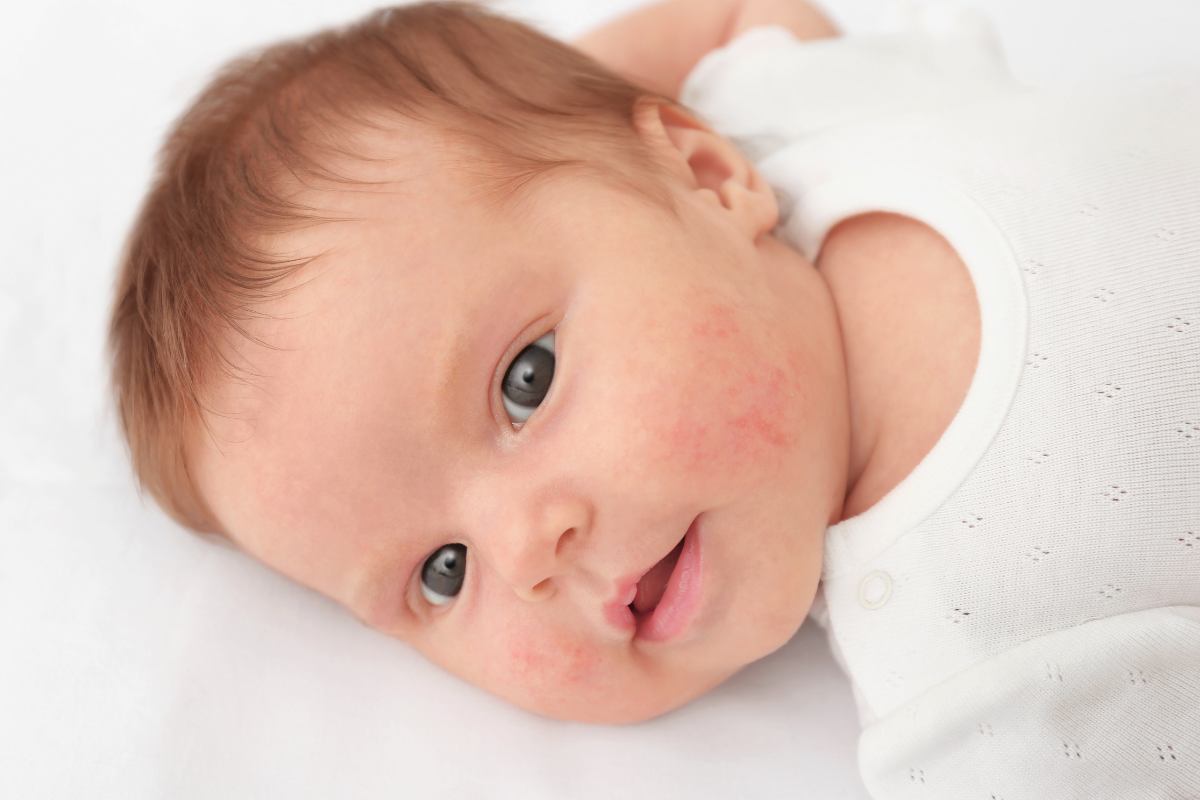Baby acne treatment

Table of Contents
What is baby acne;
Baby acne or neonatal acne usually appears in newborns before the age of 6 weeks. It is characterized as a temporary skin condition that develops on a baby’s face or body. It usually occurs in 20% of newborns.
It is considered rare, however, that a newborn can develop severe acne that will result in some kind of infection. Nevertheless, if the symptoms are serious, the doctor can prescribe the appropriate treatment to combat it.
This phenomenon is relatively rare after the age of 6 weeks so, in such cases, it would be better to be diagnosed by a dermatologist, as it may be eczema or a skin infection. [1] [2]
Baby acne: causes
The exact cause of baby acne has not yet been clarified by studies. However, some scientists believe it may be caused by maternal or infant hormones. It can also be caused by a baby’s sensitivity to a skin care product such as an ointment or oil. The most common places for acne to appear are on the face, neck, chest and upper back. Many infants may be born with infantile acne, while others may develop it after birth.
White spots are observed or even red pimples may appear which may cause mild inflammation of the skin. Incidents such as vomit or saliva that may be left on the baby’s face appear to contribute to acne irritation. [2] [3]
Baby acne: how long does it last?
Baby acne begins to appear either from birth, or within the first two to four weeks from birth. It usually does not need treatment and goes away on its own after some time, however, it can last until the child is two years old. [1] [3]
Baby acne: treatment
There are ways that can be applied at home and keep the baby’s skin clean and healthy. Some of them are as follows:
-
Keep your baby’s skin as clean as possible
You can wash your baby’s skin with warm water on a daily basis. In addition to water, a mild soap or cleanser can be applied to the skin, depending on the product recommended by the pediatrician. However, it is good to prefer products that do not have fragrance, so there are less chances of irritation.
-
Avoid Vitamin A products
Products containing vitamin A or retinoids are used on the one hand for adolescent and adult acne, on the other hand they are not recommended for infants.
-
Choose the right cream for baby acne
In cases of acne, commin baby creams and lotions can make your baby’s acne worse. Ask your pediatrician for special products for baby acne.
-
Avoid rubbing
Rubbing the skin with a towel can contribute to acne breakouts. Prefer to wipe your baby with a towel in a circular motion.
-
Avoid “bothering” acne
Prefer not to pinch or tease the surface of the baby’s skin with acne because there is a risk of irritation. [3] [4]
Neonatal acne: natural treatment
Does breast milk help with neonatal acne?
It is a common secret among mothers that when pimples appear on a nursing baby, an excellent solution is breast milk! As naturally sterile, breast milk is also a panacea for skin problems, such as newborn acne, any irritations, etc.!
Just place a few drops of breast milk on the problem area and watch it improve day by day!
Baby acne and chamomile
Also, a fairly common solution is to place a compress with chamomile tea on the irritations. It is a fact that chamomile is famous for its anti-inflammatory action, so it calms skin problems. However, before proceeding with the various medical procedures, consult your pediatrician, as not all cases are the same.
Baby acne cream: does it help?
Still other mothers seem to find the solution to baby acne in the cream for baby rash! But how safe is this option?
Although most creams contain zinc oxide that reduces inflammation, most also contain ingredients that create a hydrolipidic film that protects against water and moisture. This may be desirable for the diaper area, but not for the face, as it is likely to clog the pores and make the problem worse!
Is it something else?
-
Erythema toxicosis
Erythema toxicosis is another skin condition that appears in the form of a rash, bump or red spots. It can appear in the same places where baby acne is present, i.e. on the face, chest or limbs in the first days after birth. It disappears after a few days.
-
Drosilla
It usually occurs when the sweat glands are blocked. You may be overheating when clothing is too warm or tight, especially in the summer months. In such cases we avoid dressing the baby in such clothes. Heat rashes go away on their own after a few days.
-
Eczema
Eczema is a skin condition that causes red bumps on the face, knees or elbows. It consists of small spots of dry or thick skin, while it can intensify the situation when the baby’s elbows and knees “rub” against other surfaces – this happens mainly when the baby starts to crawl.
Eczema can become infected and appear yellow with a crust. Nevertheless, it can be treated with the use of suitable creams recommended by the doctor without a medical prescription.
-
Staphylococcus
Staphylococcus bacteria can relatively easily be transmitted to an infant when hygiene rules are not followed either by hospital staff or by people who come into contact with the infant. In such cases, the control of the infection is necessary, so that the appropriate treatment can be given afterwards.
Good hand washing before and after contact with infants is a measure to prevent staph infection. [5]
-
Atopic dermatitis
Atopic dermatitis is the most common type os eczema, a chronic skin condition characterized by itchy skin as well as patches of dry and inflamed skin. It is not a specific cause and can appear from an early age, consisting of periodic flare-ups. Scratching can lead to worsening of symptoms and increased inflammation. [6]
-
Contact dermatitis
Contact dermatitis usually results from a product that irritates the skin such as a cream, lotion, or other material, even saliva. Red bumps or flattened areas with red irritation appear. However, it is more common in older babies who have introduced solid foods to their diet. It may go away on its own after some time however, if it does not go away soon the doctor will need to prescribe a treatment to treat the condition.
-
Millet (milia)
Milia are small white bumps that develop on the skin. The most common cause is when dead skin cells or keratin get trapped under the skin and appear a few weeks after birth. There is no association with baby acne and no treatment is needed. [1] [3]
Some products for baby acne are the following:
All in all, we realise that baby acne is not something to worry us. It just needs the right skin care and a bit of a patience!
Bibliography
Disclaimer
The content of this blogspot is not and can not be considered as medical advice, diagnosis or treatment. All information is provided to readers solely for informational purposes. There is no intention to substitute this content for personalized medical advice, diagnosis, prognosis or treatment.



Leave a comment